BALSA USA: Stick 40, Having trouble with take offs.
#1

Thread Starter
Join Date: Mar 2011
Location: Goshen, IN
Posts: 304
Likes: 0
Received 0 Likes
on
0 Posts
I've been having trouble with my Stick 40 by Balsa USA. I have it configured as a tail dragger. They have you put a little wire on it, instead of a tail wheel. It just drags the wire on the ground. I guess that is what is supposed to help the model stay straight.
I have flown tail dragger aircraft for years, and never have I had so much trouble as this model! I almost can't keep it straight for take offs. Today I crashed it on take off because I couldn't keep it straight!
Most tail draggers torque to the left, so I got to give them a little right rudder to keep them straight. This aircraft tries to torque to the right. Once it's in the air, it flies straight and easy. If there was something wrong with the way I built the plane, then it shouldn't fly straight and easy.
The problem is, if I try to correct it during take off, then usually it goes too far in the other direction. As I throttle up, instead of torquing to the left more, it torques to the right more. It's weird because the angle of the engine is where the instructions told me to put it.
Does anyone else here fly the Stick 40 as a tail dragger?
My Dad made this video of me flying the Stick 40. IT DOES NOT DO A GOOD JOB SHOWING MY TAKE OFF PROBLEMS. But you can see that if really does fly good!
I have flown tail dragger aircraft for years, and never have I had so much trouble as this model! I almost can't keep it straight for take offs. Today I crashed it on take off because I couldn't keep it straight!
Most tail draggers torque to the left, so I got to give them a little right rudder to keep them straight. This aircraft tries to torque to the right. Once it's in the air, it flies straight and easy. If there was something wrong with the way I built the plane, then it shouldn't fly straight and easy.
The problem is, if I try to correct it during take off, then usually it goes too far in the other direction. As I throttle up, instead of torquing to the left more, it torques to the right more. It's weird because the angle of the engine is where the instructions told me to put it.
Does anyone else here fly the Stick 40 as a tail dragger?
My Dad made this video of me flying the Stick 40. IT DOES NOT DO A GOOD JOB SHOWING MY TAKE OFF PROBLEMS. But you can see that if really does fly good!
Last edited by gregoryshock; 07-28-2022 at 08:13 AM.
#2

My Feedback: (29)
My guess is that not actually having a full fuselage behind the wing is making the spiral slipstream work in opposite. You say that the thrust line is per plans, where exactly is that?
A few standards for me when I do a tail dragger.
wheels should be inline with the wing LE and both wheels turn freely. They also need to be parallel with the fuselage.
Typically right thrust is required, yours may need left due to the fuselage construction.
Use a throttle curve to even out the power delivery. Make sure your engine is tuned correctly. If it loads up and the starts running clean as you take off, you have a sudden burst of power that will pull you to one side.
Of course this takes for granted that the airplane was built straight in the first place. First order of business would be to make sure the fin is not canted to one side.
A few standards for me when I do a tail dragger.
wheels should be inline with the wing LE and both wheels turn freely. They also need to be parallel with the fuselage.
Typically right thrust is required, yours may need left due to the fuselage construction.
Use a throttle curve to even out the power delivery. Make sure your engine is tuned correctly. If it loads up and the starts running clean as you take off, you have a sudden burst of power that will pull you to one side.
Of course this takes for granted that the airplane was built straight in the first place. First order of business would be to make sure the fin is not canted to one side.
#3

Thread Starter
Join Date: Mar 2011
Location: Goshen, IN
Posts: 304
Likes: 0
Received 0 Likes
on
0 Posts
I'm glad that you decided to read my thread and respond. However I would prefer to hear from people who fly the Stick 40. My problem might be common with this model.
I can try to get you that information. I will need to hunt for it.
It will be hard for me prove it online, but my fuselage is as straight as anyone can build it.
I'm not using a computer radio with this. I don't have a throttle curve setting.
It will be hard to show online. I will try to take pictures and post them. But my fin is as straight as anyone can make it. I'll try to prove it but it's really hard to do that online.
#4

Join Date: Jan 2004
Location: lake in the Hills,
IL
Posts: 977
Likes: 0
Received 14 Likes
on
14 Posts
I flew one a very long time ago. No bad habits that I remember if built well. I lot of them came to the field though with a common problem that was easily fixed. The control rods were not fixed in enough points and secure enough. So there was flexing and air loading that occured in the elevator and rudder linkage system. More rigid and extra points of attachment was the solution.
Worth a look maybe.
Also if this is the problem. The way to find out is to hold the control surface still so it will not move while moving the transmitter stick. The rod would then bow out easily while the surface remained still.
Worth a look maybe.
Also if this is the problem. The way to find out is to hold the control surface still so it will not move while moving the transmitter stick. The rod would then bow out easily while the surface remained still.
Last edited by kmeyers; 07-28-2022 at 10:22 AM.
#5

Thread Starter
Join Date: Mar 2011
Location: Goshen, IN
Posts: 304
Likes: 0
Received 0 Likes
on
0 Posts
I flew one a very long time ago. No bad habits that I remember if built well. I lot of them came to the field though with a common problem that was easily fixed. The control rods were not fixed in enough points and secure enough. So there was flexing and air loading that occured in the elevator and rudder linkage system. More rigid and extra points of attachment was the solution.
Worth a look maybe.
Also if this is the problem. The way to find out is to hold the control surface still so it will not move while moving the transmitter stick. The rod would then bow out easily while the surface remained still.
Worth a look maybe.
Also if this is the problem. The way to find out is to hold the control surface still so it will not move while moving the transmitter stick. The rod would then bow out easily while the surface remained still.
#6

I flew a tail dragger of this decades ago, and it was very easy. Long time ago, so details are pretty hazy.
1. Check speed's advice about landing gear alignment and freewheeling of the wheels. Even a hint of drag/misalignment on one side, especially on grass, can make things behave poorly. Make sure they do not start to drag if pushed to one side or the other when turning.
2. The pushrod note above definitely holds true for this plane. Verify that they don't flex or bow at all, ever, under load.
3. From your description, I might suspect over control and PIO (Pilot Induced Oscillation). Can you set up dual rates for the rudder? - use low, with expo, for takeoff. Or just dial back the amount of rudder possible....
4. Does it really track straight in the air? Fly into the wind, wings level, pull exactly vertical, and chop the throttle. Before speed bleeds off completely, does it want to yaw right or left? Repeat several times to verify that it is the rudder out of trim, and not just an issue with how it entered the vertical. Trim rudder as needed so it no longer yaws in the vertical at idle.
5. Repeat after correcting (if needed) in step 4 but at full power. Does it now yaw one way or the other? If so, engine thrust is off. Don't jump to this step until #4 is correct.
1. Check speed's advice about landing gear alignment and freewheeling of the wheels. Even a hint of drag/misalignment on one side, especially on grass, can make things behave poorly. Make sure they do not start to drag if pushed to one side or the other when turning.
2. The pushrod note above definitely holds true for this plane. Verify that they don't flex or bow at all, ever, under load.
3. From your description, I might suspect over control and PIO (Pilot Induced Oscillation). Can you set up dual rates for the rudder? - use low, with expo, for takeoff. Or just dial back the amount of rudder possible....
4. Does it really track straight in the air? Fly into the wind, wings level, pull exactly vertical, and chop the throttle. Before speed bleeds off completely, does it want to yaw right or left? Repeat several times to verify that it is the rudder out of trim, and not just an issue with how it entered the vertical. Trim rudder as needed so it no longer yaws in the vertical at idle.
5. Repeat after correcting (if needed) in step 4 but at full power. Does it now yaw one way or the other? If so, engine thrust is off. Don't jump to this step until #4 is correct.
#8

Check for toe-out in the wheels. Prop the tail up to approximately level flight condition, and view the model from directly above. The leading edge of the wheels must not point out. Actually a little toe-in is desirable. If you are not already using differential on the rudder channel, try that. It should help to keep you from over controlling. Good luck, and let us know if you solve the problem.
#9

Thread Starter
Join Date: Mar 2011
Location: Goshen, IN
Posts: 304
Likes: 0
Received 0 Likes
on
0 Posts
Your advice looks like somethings I can try. But I have some questions.
I'll check, but they should be ok.
My push rods are the metal kind guided through a sheath. I don't think they are flexing too much, but I'll check. (The reason why I chose metal is because metal doesn't flex easily.)
I bought this plane to be something easy to fly. I also wanted for using up old radio equipment. My transmitter is an old Futaba 4 channel. It doesn't have dual rates or expo.
Does this need to be done in the wind? I don't usually fly when it's windy.
I'll keep this in mind.
I flew a tail dragger of this decades ago, and it was very easy. Long time ago, so details are pretty hazy.
1. Check speed's advice about landing gear alignment and freewheeling of the wheels. Even a hint of drag/misalignment on one side, especially on grass, can make things behave poorly. Make sure they do not start to drag if pushed to one side or the other when turning.
1. Check speed's advice about landing gear alignment and freewheeling of the wheels. Even a hint of drag/misalignment on one side, especially on grass, can make things behave poorly. Make sure they do not start to drag if pushed to one side or the other when turning.
4. Does it really track straight in the air? Fly into the wind, wings level, pull exactly vertical, and chop the throttle. Before speed bleeds off completely, does it want to yaw right or left? Repeat several times to verify that it is the rudder out of trim, and not just an issue with how it entered the vertical. Trim rudder as needed so it no longer yaws in the vertical at idle.
#10

Thread Starter
Join Date: Mar 2011
Location: Goshen, IN
Posts: 304
Likes: 0
Received 0 Likes
on
0 Posts
I made these pictures smaller so that I could upload them easier. But these are all the tail draggers I've flown. And none of them gave me the trouble that my Stick 40 has been giving me.


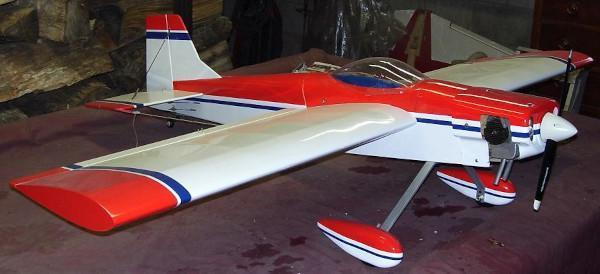


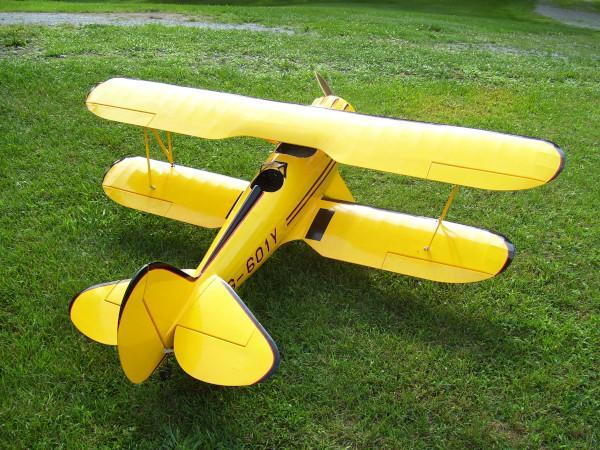
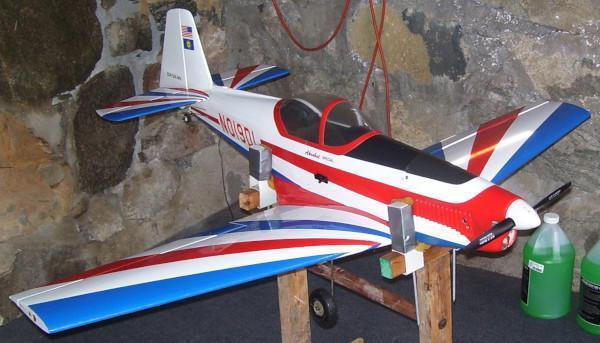







Last edited by gregoryshock; 07-28-2022 at 05:59 PM.
#11

To your comments about mine:
Gear - the slight toe in is a good suggestion.
If the sheath for the pushrod is not well secured along its length, even metal pushrods will bend significantly, leading to less then precise control.
No duel rates or expo - then dial down the rudder throw, a lot. Even if it is the old fashioned way by changing holes used in the control horn or servo arm. I just relearned last month due to the same issue with a bad foam Fokker Triplane model I was given. Has a skid for the tail too. Too much rudder, and it was a nightmare to takeoff. Cut the throw a lot, and it became much easier - just too easy for the pilot (me!) to over correct.
For checking trimming, fly straight into whatever wind there is. Easier to deduce what it is doing on days with lower winds.
What model of the Zlin 526? My favorite plane of all time....(at least due to looks, my old Sig ones never flew that well, actually)
Gear - the slight toe in is a good suggestion.
If the sheath for the pushrod is not well secured along its length, even metal pushrods will bend significantly, leading to less then precise control.
No duel rates or expo - then dial down the rudder throw, a lot. Even if it is the old fashioned way by changing holes used in the control horn or servo arm. I just relearned last month due to the same issue with a bad foam Fokker Triplane model I was given. Has a skid for the tail too. Too much rudder, and it was a nightmare to takeoff. Cut the throw a lot, and it became much easier - just too easy for the pilot (me!) to over correct.
For checking trimming, fly straight into whatever wind there is. Easier to deduce what it is doing on days with lower winds.
What model of the Zlin 526? My favorite plane of all time....(at least due to looks, my old Sig ones never flew that well, actually)
#12

Thread Starter
Join Date: Mar 2011
Location: Goshen, IN
Posts: 304
Likes: 0
Received 0 Likes
on
0 Posts
To your comments about mine:
Gear - the slight toe in is a good suggestion.
If the sheath for the pushrod is not well secured along its length, even metal pushrods will bend significantly, leading to less then precise control.
No duel rates or expo - then dial down the rudder throw, a lot. Even if it is the old fashioned way by changing holes used in the control horn or servo arm. I just relearned last month due to the same issue with a bad foam Fokker Triplane model I was given. Has a skid for the tail too. Too much rudder, and it was a nightmare to takeoff. Cut the throw a lot, and it became much easier - just too easy for the pilot (me!) to over correct.
For checking trimming, fly straight into whatever wind there is. Easier to deduce what it is doing on days with lower winds.
What model of the Zlin 526? My favorite plane of all time....(at least due to looks, my old Sig ones never flew that well, actually)
Gear - the slight toe in is a good suggestion.
If the sheath for the pushrod is not well secured along its length, even metal pushrods will bend significantly, leading to less then precise control.
No duel rates or expo - then dial down the rudder throw, a lot. Even if it is the old fashioned way by changing holes used in the control horn or servo arm. I just relearned last month due to the same issue with a bad foam Fokker Triplane model I was given. Has a skid for the tail too. Too much rudder, and it was a nightmare to takeoff. Cut the throw a lot, and it became much easier - just too easy for the pilot (me!) to over correct.
For checking trimming, fly straight into whatever wind there is. Easier to deduce what it is doing on days with lower winds.
What model of the Zlin 526? My favorite plane of all time....(at least due to looks, my old Sig ones never flew that well, actually)
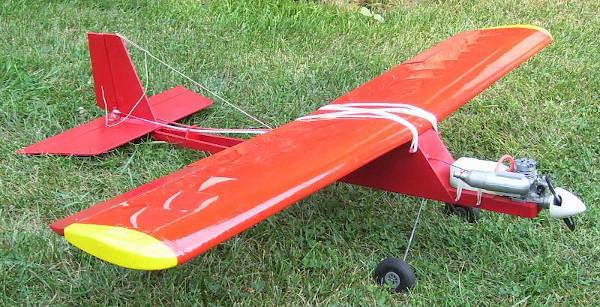
My Dad and I have been looking the Stick 40 over. We have decided that there is a twist in the sticks that form the tail! We do not know how this happened. The plane was built on a flat door, with a flat piece of drywall put on top. Everything was pinned down over the plans, and then glued. The stab alignment to the wing would of been checked before gluing it down. The same is true of the fin. We only have one theory of what could of happened. The instructions tells you to spray paint the model. Maybe while it was drying it caused the sticks to twist slightly. We have been trying to get the twist out of it, but so far we have had no success!
That is a Zlin 526 by Great Planes. It was an ARF model that I bought and put together in 2010. I've been flying it every summer for 12 years. I think it's a good flying model. It's easy to take off. It gives me a challenge in the air and especially landing. I often need to straighten the landing gear, because the model tends to land hot.
This is a video that my dad made of me flying the Zlin 526. Due to my camera setup we couldn't capture any stunts. It's just take off, a little level flight, and landing.
#13

I love that you are flying old equipment! Here's another thing to check. Since you are flying off of grass, check the stiffness of your wire gear. If the gear is bending backwards on takeoff, do the wheels twist outward, causing toe-out? Can you try flying from a paved surface?
#14

Thread Starter
Join Date: Mar 2011
Location: Goshen, IN
Posts: 304
Likes: 0
Received 0 Likes
on
0 Posts
I love that you are flying old equipment! Here's another thing to check. Since you are flying off of grass, check the stiffness of your wire gear. If the gear is bending backwards on takeoff, do the wheels twist outward, causing toe-out? Can you try flying from a paved surface?
#15

Join Date: Jun 2003
Location: Richmond,
VA
Posts: 77
Likes: 0
Received 0 Likes
on
0 Posts
I did my training and first solo on Balsa USA Stik 40 + (the version with ailerons).
Thunder Tiger 46 and I built the wing on a jig and set up with tricycle gear.
Fantastic plane, my training advisor loved flying it.
I kept knocking off the nose wheel on landings while learning so I converted the Stik 40 + to a tail dragger (put a stationary tail wheel on the stik booms).
I didnt notice any bad habit taking off.......Is it the wire skid dragging on grass, causing some odd inputs to correct / over correct while trying to accelerate ?
The stiks holding the tail are real hard wood and I painted mine ...no problem twisting.
If there was a twist in the stiks affecting the tail fin alignments enough to make take off a problem...wouldnt it also affect the trim while flying?
Q: Are all your taildraggers with a tailwheel on rudder...any with wire skids?
Thunder Tiger 46 and I built the wing on a jig and set up with tricycle gear.
Fantastic plane, my training advisor loved flying it.
I kept knocking off the nose wheel on landings while learning so I converted the Stik 40 + to a tail dragger (put a stationary tail wheel on the stik booms).
I didnt notice any bad habit taking off.......Is it the wire skid dragging on grass, causing some odd inputs to correct / over correct while trying to accelerate ?
The stiks holding the tail are real hard wood and I painted mine ...no problem twisting.
If there was a twist in the stiks affecting the tail fin alignments enough to make take off a problem...wouldnt it also affect the trim while flying?
Q: Are all your taildraggers with a tailwheel on rudder...any with wire skids?
Last edited by AllThumbs; 07-29-2022 at 02:56 PM.
#16

Gotta love wood - every piece is different. Humidity changes can make a big difference in bends and twists. May have happened when painting it. If heat doesn't fix it (and it may not be a permanent fix), then all one can do is to shim everything else to match (wing, gear).
However...given what you described, the twist in the tail would have to be outrageously off to make any difference in the take off ability, especially with that plane.
I'm leaning toward reducing rudder authority as the thing to try first...worst that will happen is that stall turns will be crappy....
However...given what you described, the twist in the tail would have to be outrageously off to make any difference in the take off ability, especially with that plane.
I'm leaning toward reducing rudder authority as the thing to try first...worst that will happen is that stall turns will be crappy....
#17

Thread Starter
Join Date: Mar 2011
Location: Goshen, IN
Posts: 304
Likes: 0
Received 0 Likes
on
0 Posts
.Is it the wire skid dragging on grass, causing some odd inputs to correct / over correct while trying to accelerate ?
The stiks holding the tail are real hard wood and I painted mine ...no problem twisting.
If there was a twist in the stiks affecting the tail fin alignments enough to make take off a problem...wouldnt it also affect the trim while flying?
The stiks holding the tail are real hard wood and I painted mine ...no problem twisting.
If there was a twist in the stiks affecting the tail fin alignments enough to make take off a problem...wouldnt it also affect the trim while flying?
Gotta love wood - every piece is different. Humidity changes can make a big difference in bends and twists. May have happened when painting it. If heat doesn't fix it (and it may not be a permanent fix), then all one can do is to shim everything else to match (wing, gear).
However...given what you described, the twist in the tail would have to be outrageously off to make any difference in the take off ability, especially with that plane.
I'm leaning toward reducing rudder authority as the thing to try first...worst that will happen is that stall turns will be crappy....
However...given what you described, the twist in the tail would have to be outrageously off to make any difference in the take off ability, especially with that plane.
I'm leaning toward reducing rudder authority as the thing to try first...worst that will happen is that stall turns will be crappy....
"Hey there! Sounds kind of like you have some twist in it. Itís an easy fix just take out the right thrust. If it has no right thrust just add in some left thrust. That should take care of it. Itís really tough to say for sure because of not physically seeing it fly, but that I would think would square you away. If itís doesnít just let me know."
I was a bit taken back because my dad and I have built other kits before. We never had trouble with a twist before. It didn't hit us right away what we were looking for, until now! After the crash we started looking over the model harder, and noticed a little twist in. It's very small, you got to look carefully to see it.
I would like to fix the twist first. If I can't then I might try changing the engine like Balsa USA suggests.
Can you tell me how you would apply heat to the sticks?
#18

Depends on what you are trying to "untwist". I assume you mean that the horizontal stab is not lined up with the wing, when viewed from the rear - with wing level, the stab tilts. I'd try using a covering heat gun and getting the wood main beams as hot as you can, without melting nearby things, then giving it an opposite twist (going beyond level) and hold it while it cools. Sometime it works, sometimes the twist comes back after time. Or try with a very hot covering iron, although it is harder to get all the areas you are trying to bend warmed up.
#19

Join Date: Jan 2004
Location: lake in the Hills,
IL
Posts: 977
Likes: 0
Received 14 Likes
on
14 Posts
I have given you a method for testing the linkage. Have not heard of such a simple test being done (wing off so you can see in the box too). Remember I said I've seen a lot of these.
No matter though, seen enough to jump to conclusion: PIO. I don't mean any disrespect, just another common problem.
Expo in your fingers works on old radios, just takes practice. Reducing the physical travel mechanically ( of the rudder ) I believe will help as well.
I would always make students work on taxing. I am still working on it myself.
PIO
No matter though, seen enough to jump to conclusion: PIO. I don't mean any disrespect, just another common problem.
Expo in your fingers works on old radios, just takes practice. Reducing the physical travel mechanically ( of the rudder ) I believe will help as well.
I would always make students work on taxing. I am still working on it myself.
PIO
#20

Thread Starter
Join Date: Mar 2011
Location: Goshen, IN
Posts: 304
Likes: 0
Received 0 Likes
on
0 Posts
I have given you a method for testing the linkage. Have not heard of such a simple test being done (wing off so you can see in the box too). Remember I said I've seen a lot of these.
No matter though, seen enough to jump to conclusion: PIO. I don't mean any disrespect, just another common problem.
Expo in your fingers works on old radios, just takes practice. Reducing the physical travel mechanically ( of the rudder ) I believe will help as well.
I would always make students work on taxing. I am still working on it myself.
PIO
No matter though, seen enough to jump to conclusion: PIO. I don't mean any disrespect, just another common problem.
Expo in your fingers works on old radios, just takes practice. Reducing the physical travel mechanically ( of the rudder ) I believe will help as well.
I would always make students work on taxing. I am still working on it myself.
PIO
#22

Thread Starter
Join Date: Mar 2011
Location: Goshen, IN
Posts: 304
Likes: 0
Received 0 Likes
on
0 Posts
We re attached the push rods, and they seem to be secure enough. They don't flex under pressure. I've actually flown my Hog Biplane with terrible push rods. But that's another story. I will say this, there are model airplane kits that come with push rods that I absolutely hate. The Stick 40 kit doesn't come with any push rods or hinges. Maybe I'm getting a bit off topic by saying this, but I wouldn't recommend the Stick 40 to a beginner builder since it doesn't come with push rods and hinges. There are some other things about the kit that I don't think is very good for a newbie. My first plane and kit was Eagle II by CG, it came with everything you needed but the Radio, Engine, Glue, and Wheels.
The reason why I bought the Stick 40 is because I'm a Custodian for a School. I work 2nd shift, and I walk over 10,000 steps. I am really tired when I get home. The nice thing about my job is that I get two months off of work in the Summer. It's those two months that I fly my other airplanes. I thought with the Stick 40, it would be a lot easier to keep this airplane ready to go fly. That way I could fly before I go to work, and maybe even on the weekends. It has a lot less upkeep. Also it looked like an airplane that could take a beating, and be easy to fix. It never occurred to me that this design could twist this easy, or be a pain on the ground.
Before I wrote my original post, I had probably flown the model at least 10 times or more. Sometimes I got a good take off, but most of the time it was a bit iffy. After this crash on take off, I decided it was time to do something about this! Since this is my first stick airplane, I am still learning about what can go wrong with them.
Last edited by gregoryshock; 08-01-2022 at 05:03 AM.
#23

Join Date: Jan 2004
Location: lake in the Hills,
IL
Posts: 977
Likes: 0
Received 14 Likes
on
14 Posts
As I remember it was a great plane for practice. Fly, touch and go, stall turns, a couple of cuban 8's, then taxis over look at the tank for remaining fuel and do it again. Easiest plane to fly until the tank is empty.
#24

Thread Starter
Join Date: Mar 2011
Location: Goshen, IN
Posts: 304
Likes: 0
Received 0 Likes
on
0 Posts
I lucked out on the first take off, and got it in the air. Once it was in the air, I had to adjust the elevator trim down. Then I adjusted the aileron a 2 clicks to the left. After that plane flew smooth and easy. I relaxed and did some loops and rolls. Then did some smooth fly byes, some fast and some slow. I stayed up in the air for 10 minutes, and then landed. The landing went good.
After landing, my Dad said, why don't you take off again, and come around. So I tried again. This time, the plane lifted off in a knife edge, and then I tried to even it out first with ailerons, and then added some rudder. I got the plane to come back the other way,and then it decided to go into the ground that way. There was nothing I could do to stop it.
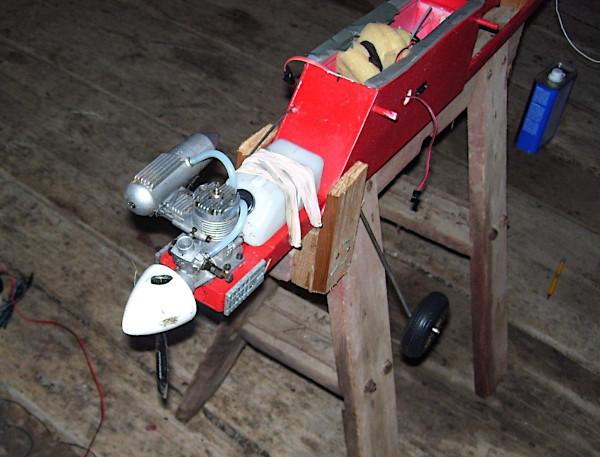

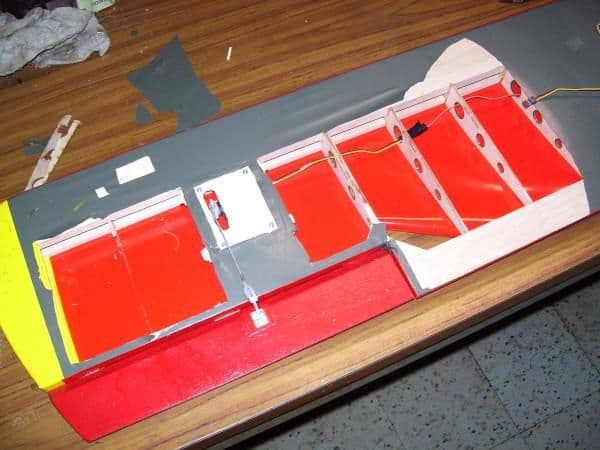
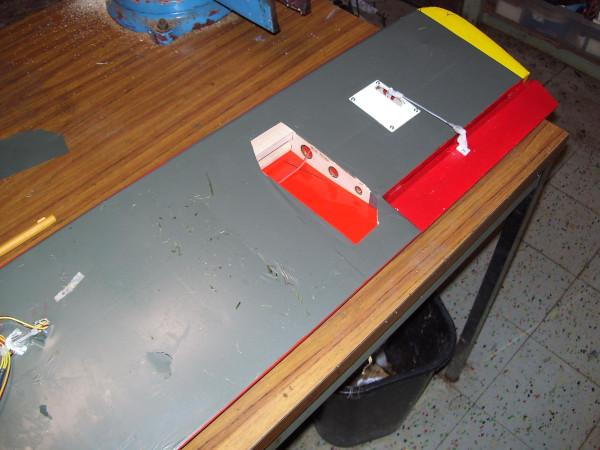



#25
Moderator
I'm late to the conversation, but here's my take.
Your twisted fuselage has nothing to do with your ground handling problem. At takeoff, there is so little force being generated by that part of the plane compared to the engine torque and gear setup that it's a non-issue.
The wire landing gear is probably too flimsy for a rough grass runway. The wheels might be too small also. If the gear is folding back, it will also create some toe out. If it's folding back unevenly, it will create a steering effect.
On the main gear topic, I'd bet good money your axles are not square to the center line of your plane. It doesn't take much angle on either side to create a steering effect, and if one wheel is toed out and the other isn't, it exacerbates the effect.
Ground handling can be squirrely on a tail skid plane, especially a fixed skid. Switch to a steerable tail wheel. Even without your looping issues, it will make taxiing easier.
Every single time I've heard of a tail dragger torquing to the right on takeoff, there has been an alignment problem on the main gear either due to it not being straight or due to it bending. Address that first.
Your twisted fuselage has nothing to do with your ground handling problem. At takeoff, there is so little force being generated by that part of the plane compared to the engine torque and gear setup that it's a non-issue.
The wire landing gear is probably too flimsy for a rough grass runway. The wheels might be too small also. If the gear is folding back, it will also create some toe out. If it's folding back unevenly, it will create a steering effect.
On the main gear topic, I'd bet good money your axles are not square to the center line of your plane. It doesn't take much angle on either side to create a steering effect, and if one wheel is toed out and the other isn't, it exacerbates the effect.
Ground handling can be squirrely on a tail skid plane, especially a fixed skid. Switch to a steerable tail wheel. Even without your looping issues, it will make taxiing easier.
Every single time I've heard of a tail dragger torquing to the right on takeoff, there has been an alignment problem on the main gear either due to it not being straight or due to it bending. Address that first.



